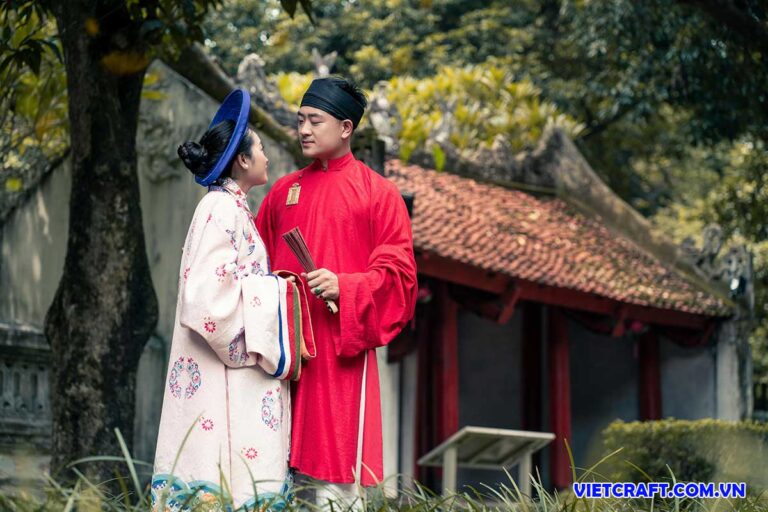
Amidst the beauty of Southeast Asian culture, Vietnam is known as an Asian gem, with a captivating blend of ancient customs and contemporary influences. Vietnamese traditional culture is diverse and rich, imbued with historical and regional characteristics, and is a system of values, customs, arts, and other cultural expressions that the Vietnamese have adopted. Developed and passed on through generations. This article will explore the fascinating world of Vietnamese Traditional Culture quintessence.
Essential characteristics of Vietnamese traditional culture
Vietnamese traditional culture is highly diverse. Despite its geographical location in Southeast Asia, Vietnamese traditional culture is sometimes considered part of the East Asian cultural region (along with China, Taiwan, North Korea, South Korea, and Japan) by many people. Similarity.
Vietnamese traditional culture under the concept of a unified national culture based on nuances and multi-ethnicity is expressed in the following main characteristics:
- First, Vietnam has a rich and diverse culture, is a community of 54 ethnic groups, has many long-standing customs and practices, and has traditional festivals with many meanings and diversity. With various beliefs and harmony between many different doctrinal ideas, The Vietnamese language is detailed and highly symbolic, from conventional to modern, from culture, society, and art…
- Second, Differences in topographic structure, climate, and ethnic distribution have created cultural regions in Vietnam with unique characteristics. From the cradle of Vietnamese Traditional Culture in the Red River Delta of Northern Vietnam, the village culture and wet rice civilization, to the cultural nuances of mountainous ethnic groups in the Northwest and Eastern regions. North. From the borderlands of the North Central region to the mixture of the Champa culture of the Cham people in the South Central region. From the new lands in the South with the cultural combination of the Chinese and Khmer ethnic groups to the diversity of culture and ethnic groups in the Central Highlands (Tây Nguyên).
- Third: With a history dating back thousands of years, the Vietnamese people and the later convergence of other ethnic groups. With influences from ancient China, French influences from the 19th century, American influences from the 20th century, and globalization from the 21st century. Vietnam has had cultural changes over time. Some aspects have been historically lost, but other cultural elements have been added to modern Vietnamese Traditional Culture.
Some elements often considered characteristic of traditional Vietnamese culture include reverence for ancestors, respect for community values, and valuing family, handicrafts, hard work, piousness, and studiousness. Standard symbols in Vietnamese Traditional Culture include Dragons, Turtles, Lotus flowers, and Bamboo.
About Social Organization
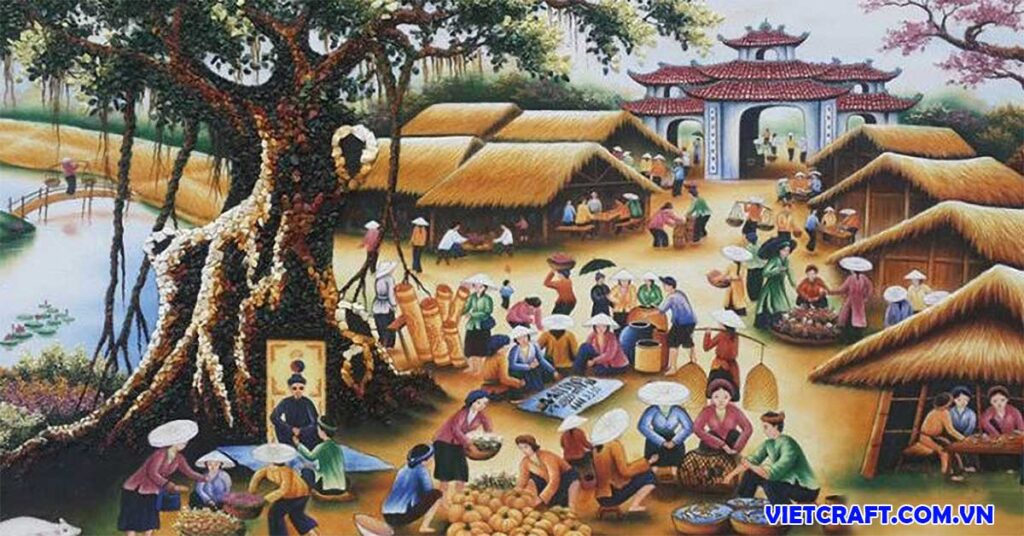
The two most important social units in culture have been the Village and the Country for thousands of years. The intermediate organizational units are the District and Province.
Kinship within families plays a considerable role in Vietnam. Unlike Western culture’s emphasis on individuality, Eastern culture values the role of family and clan. In Eastern culture (especially the Chinese Culture region), Chinese culture loves family more than clan, while in Vietnamese Traditional Culture, clan is placed higher than family. The family always has a family head and altar (family church).
Vietnamese society is traditionally organized around the family unit. There may be three or four generations living in the same family. The extended family, including grandparents, parents, and children, often lives together or nearby. The family is considered the foundation of social support and cultural identity.
Confucian principles have historically influenced social organization in Vietnam. Respect for hierarchy, filial piety, and the importance of education are deeply ingrained in Vietnamese culture.
Historically, Vietnamese communities were organized around the village communal system, where villagers shared resources and responsibilities and participated in joint activities. Although urbanization has shifted this structure, vestiges of collective values persist.
Relationships within a multigenerational family are pretty complex, a result of both Confucianism and social norms conveyed through the widespread use of different pronouns in Vietnamese; a wide array of honorifics indicate the speaker’s status concerning the person they are speaking. Addressing people in Vietnamese has become a characteristic of Vietnamese traditional culture.
While Vietnam has undergone significant social changes, traditional values, community bonds, and familial ties continue to play a crucial role in shaping the country’s social fabric. The interplay between tradition and modernity is evident in various aspects of Vietnamese social organization.
About Religion
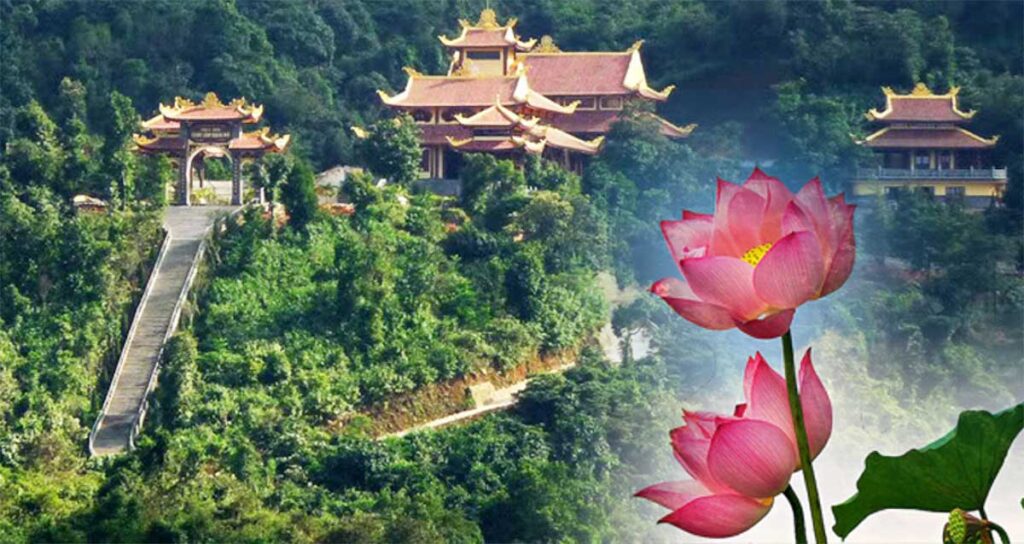
The religious history of Vietnam is intricate and has been shaped by a blend of indigenous beliefs, Chinese influence, and, later, interactions with Western religions. Religions in Vietnam include Mahayana Buddhism, Confucianism, and Taoism (known as the “Three Religions”). Several other religions include Roman Catholic, Cao Dai, and Hoa Hao. Other religious groups with fewer adherents include Theravada Buddhism, Protestantism, and Islam.
The majority of Vietnamese people consider themselves to be non-religious, although they do go to religious sites several times a year. Vietnamese people are said to have a little holy spirit. Religions often focus on worship, with little attention to the doctrinal element.
Buddhism originated in India, and two sects were introduced to Vietnam in two ways: the Mahayana sect entered Vietnam through China, along with Taoism and Confucianism. The Hinayana sect passed through neighboring Southeast Asian countries to Vietnam and is popular among the Khmer community in the Mekong Delta.
Catholicism was introduced to Vietnam in the 16th century. Although missionary work at that time faced many difficulties, in Vietnam, from the beginning, there were several Catholics from the late 19th century when colonialists. If France had invaded Vietnam entirely, preaching freely would have been easy. Currently, Vietnam has about 8% of the population being Catholics, ranking second in Southeast Asia after the Philippines.
Along with Catholicism, another sect of Christianity, Protestantism, has also penetrated Vietnam since the early 20th century. Protestantism was popularized among ethnic minorities in the Northwest, Central Highlands, etc. It is estimated that there are currently more than 1 million followers.
Islam is the religion of a part of the Cham people in Vietnam, introduced in the 15th century in the Champa kingdom in Central Vietnam, then following a part of the Cham people migrating to the An Giang region, Tay Ninh, in the 19th century.
In addition to the above-imported religions, Hoa Hao and Cao Dai religions are in the South of Vietnam. These are two indigenous religions in Vietnam. The Hoa Hao religion was founded in 1939, and the Cao Dai religion was founded in 1926. These two indigenous religions are thriving throughout the South and some provinces.
It’s important to note that the Vietnamese government officially recognizes six religions: Buddhism, Catholicism, Protestantism, Caodaism, Hoa Hao Buddhism, and Islam. The government has implemented policies to regulate religious activities, and religious organizations must register with authorities.
Throughout its history, Vietnam has witnessed the interplay of various religious traditions, indigenous beliefs, and external influences, creating a unique religious landscape that reflects the cultural and historical development of the country.
Language
In terms of language, ethnologists have divided the ethnic groups in Vietnam into eight language groups:
- Viet-Muong group: includes Vietnamese, Muong, Chut, and Tho people
- Tay-Thai group: includes Tay, Thai, Nung, Bo Y, San Chay, Lao, etc.
- Dao-Hmong group: includes Hmong, Dao, Pa Then,…
- Tibeto-Burman group: includes Ha Nhi, Lo Lo, Si La, La Hu, etc.
- Han group: includes Chinese, San Diu, Ngai, etc.
- Mon-Khmer group: includes Khmer, Khang, Hre, Xo Dang, Ba Na, Kho Mu, Co Ho, Ma, Xinh Mun, etc.
- Malay-Polynesian group: includes Cham, Gia Rai, Ede, Ra Glai, Chu Ru, etc.
- South Asian mixed group: includes La Chi, La Ha, Pu Cheo, Co Lao, etc.
Vietnamese belongs to the Viet-Muong group, and it is currently the official language of Vietnam, the mother tongue of the Vietnamese people, and the common administrative language of 54 ethnic groups living in Vietnam. 86% of people use it. Although it is the common language of Vietnamese people, it has differences in phonetics and vocabulary across regions, leading to the Vietnamese dialect being divided into many different dialect regions from the North, Central, and South.
In terms of origin, Vietnamese is considered to have origins with South Asian languages in terms of vocabulary combined with Tay-Thai languages in terms of tones. During the development process, the Vietnamese absorbed and assimilated many Chinese words called Sino-Vietnamese. In addition, Vietnamese has also absorbed many scientific and technical words from the French and Russian languages. England from the early 20th century to the present.
Since the 17th century, when Western missionaries entered Vietnam to preach Catholicism, they relied on the Portuguese and Italian alphabets to transcribe Vietnamese in Latin, and this was the basis for the birth of Catholicism, the National language. Although the National Language has existed since the 17th century, it was not until the early 20th century, when the French colonialists thoroughly colonized Vietnam, that the National Language was protected by the French to be popularized as a communication tool. It is convenient in Vietnamese society that French also uses Latin letters.
In addition to the National script, the popular script for people in Vietnam today, several other ethnic groups use their scripts in parallel, such as the Khmer script of the Khmer people in the South and the Akhar Thrah script of the Cham people. , Thai script of the Thai people in the Northwest region, Mnong script of the Mnong people in the Central Highlands,… to preserve our people’s culture and receive new knowledge translated from the national language. According to current statistics, 26 ethnic minorities in Vietnam have their writing in addition to the National Language.
Vietnamese cuisine
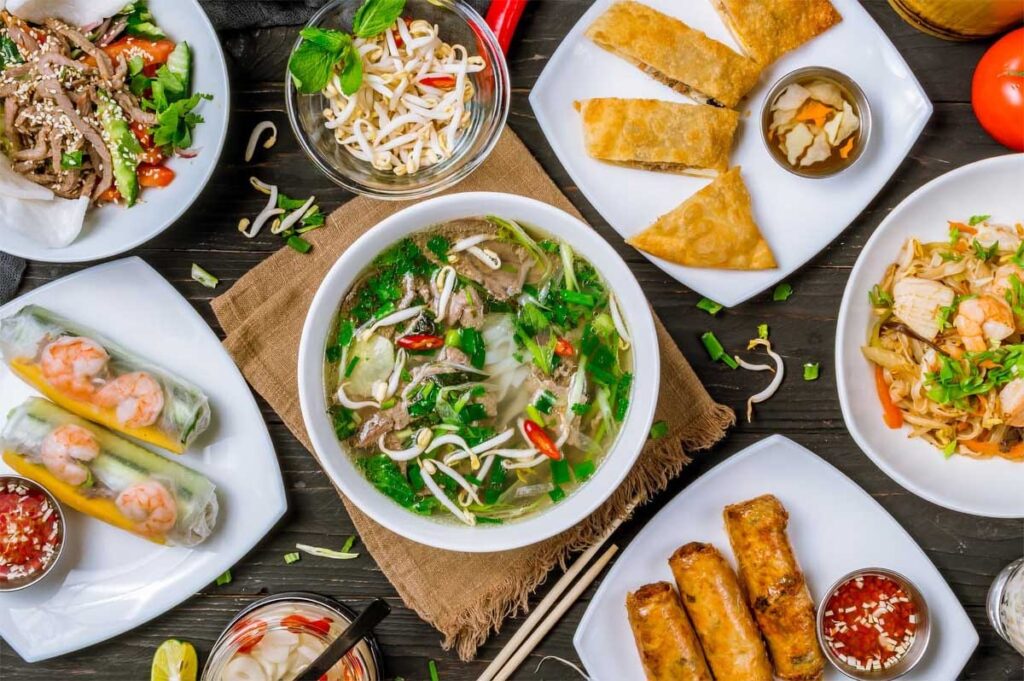
Vietnamese cuisine is known for its vibrant flavors, fresh ingredients, and balance of textures. It has gained international acclaim for its delicious and healthy offerings.
Vietnamese cuisine focuses on delicious food, although sometimes it does not put nutritious food as the primary goal. Therefore, in the Vietnamese culinary system, a few highly sophisticated dishes are not stewed and simmered carefully like in Chinese cuisine, nor are they inclined towards highly aesthetic presentation like in Japanese cuisine. About delicately mixing spices to make the dish delicious or using chewy, crunchy ingredients that are enjoyable to enjoy even though they are not fatty.
Many people perceive, emotionally, that the characteristics of Vietnamese cuisine are the neutrality in mixing ingredients that are not too spicy, too sweet, or too fatty. The auxiliary ingredients (spices) for preparing Vietnamese dishes are rich, including many herbs, plant spices, fruits, and young leaves. Fermented and typical spices of the tropical peoples mentioned above are used harmoniously and often follow the principle of “yin and yang development.”
The number of dishes and ways of combining foods in Vietnamese cuisine is highly diverse due to the combination of East and West, Chinese cuisine, and Southeast Asian cuisine, especially people’s creativity. Vietnam to localize and find the most appropriate methods. Some dishes have not changed for thousands of years.
Here are some critical aspects of Vietnamese cuisine you must try:
- Pho: Pho is perhaps the most famous Vietnamese dish. It’s a noodle soup with beef (Pho Bo) or chicken (Pho Ga). The broth is flavored with a mix of spices like star anise, cinnamon, and cloves, and it’s served with rice noodles, fresh herbs, and various condiments.
- Banh Mi: Banh Mi is a Vietnamese sandwich that originated from the French influence during the colonial period. It typically includes a baguette with grilled meats, pate, pickled vegetables, and fresh herbs.
- Spring Rolls (Goi Cuon): Fresh spring rolls, known as Goi Cuon or Vietnamese summer rolls, are made with rice paper filled with shrimp, herbs, vermicelli noodles, and sometimes pork. They are often served with a peanut dipping sauce.
- Bun Cha: Bun Cha is a dish featuring grilled pork patties and pork belly served over vermicelli noodles, accompanied by a dipping sauce and a plate of fresh herbs.
- Com (Rice): Rice is a staple in Vietnamese cuisine and is often served alongside various dishes. Com refers to cooked rice, an essential part of almost every meal.
- Nuoc Mam (Fish Sauce): Fish sauce is a fundamental condiment in Vietnamese cuisine, providing a savory and umami flavor to many dishes. It is often used in marinades, dressings, and dipping sauces.
- Cha Ca La Vong: Cha Ca La Vong is a famous Hanoi specialty. It consists of grilled fish (usually catfish) marinated in turmeric and served with vermicelli noodles, peanuts, and fresh herbs.
- Bun Thit Nuong: Bun Thit Nuong is a dish featuring grilled pork served over vermicelli noodles, often accompanied by peanuts, fresh herbs, and a sweet and savory fish sauce-based dressing.
- Ca Phe (Vietnamese Coffee): Vietnamese coffee is strong, rich, and often sweetened with condensed milk. Traditional preparation involves dripping hot water through a metal mesh filter into a glass containing sweetened condensed milk.
- Xoi (Sticky Rice): Xoi is sticky rice, often flavored and colored with various ingredients like mung beans, peanuts, or pandan leaves. It can be served as a savory or sweet dish.
- Che (Sweet Desserts): Che refers to a variety of sweet Vietnamese desserts, often made with beans, fruits, coconut milk, and glutinous rice. Che can be served hot or cold.
- Banh Xeo: Banh Xeo is a crispy Vietnamese pancake filled with shrimp, pork, bean sprouts, and herbs. It is typically served with fresh lettuce and herbs for wrapping.
Costumes
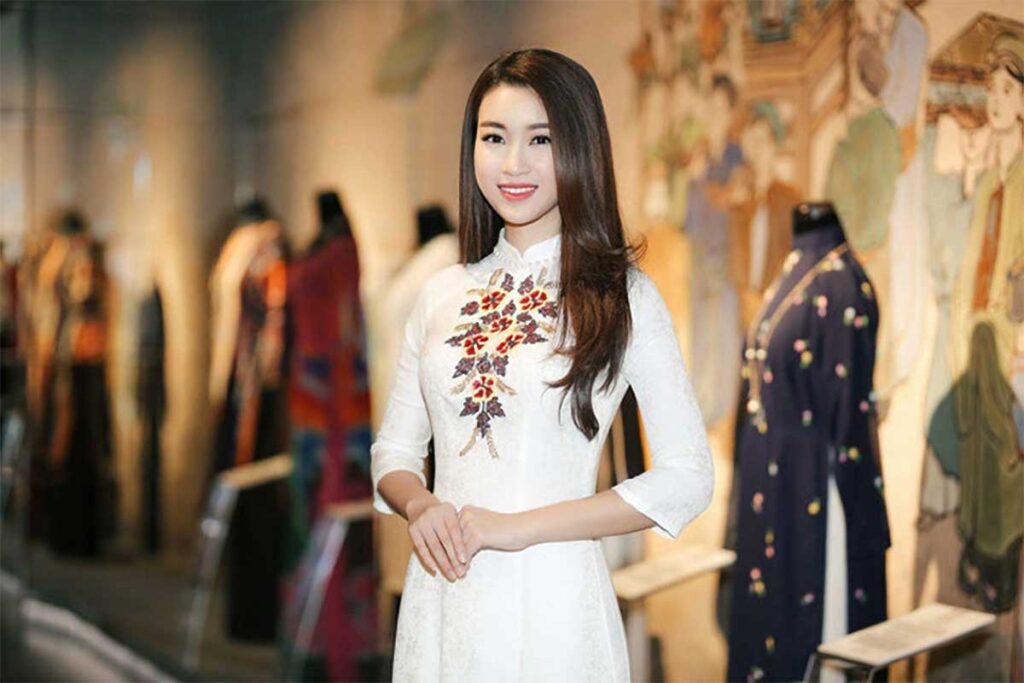
Traditional Vietnamese costumes have a long history and are deeply rooted in the country’s culture. The most iconic conventional attire is the “Ao Dai“, “Non La” (Conical Hat), “Ao Ba Ba“…
Vietnamese costumes are very diverse. In feudal times, people had stringent rules about how to dress. Civilians are prohibited from wearing clothes dyed any color other than black, brown, or white. People’s clothes are mostly ordinary and simple, to suit their status in society (except for essential occasions or worship ceremonies, weddings…).
One of the oldest costumes worn by ordinary women until the early twentieth century was the “Four-body Ao Dai“. Many researchers believe the “four-body ao dai” may have been born in the 12th century. In today’s daily life, the outfit has followed the Western style. Traditional clothes are only worn on special occasions. In addition, ao dai for both men and women is considered the national costume of Vietnam.
These traditional Vietnamese costumes showcase the country’s diverse cultural heritage and the regional variations in clothing styles. While modern Western clothing is prevalent daily, traditional costumes are still proudly worn during special occasions, cultural events, and traditional ceremonies, preserving the rich tapestry of Vietnamese culture.
Festival
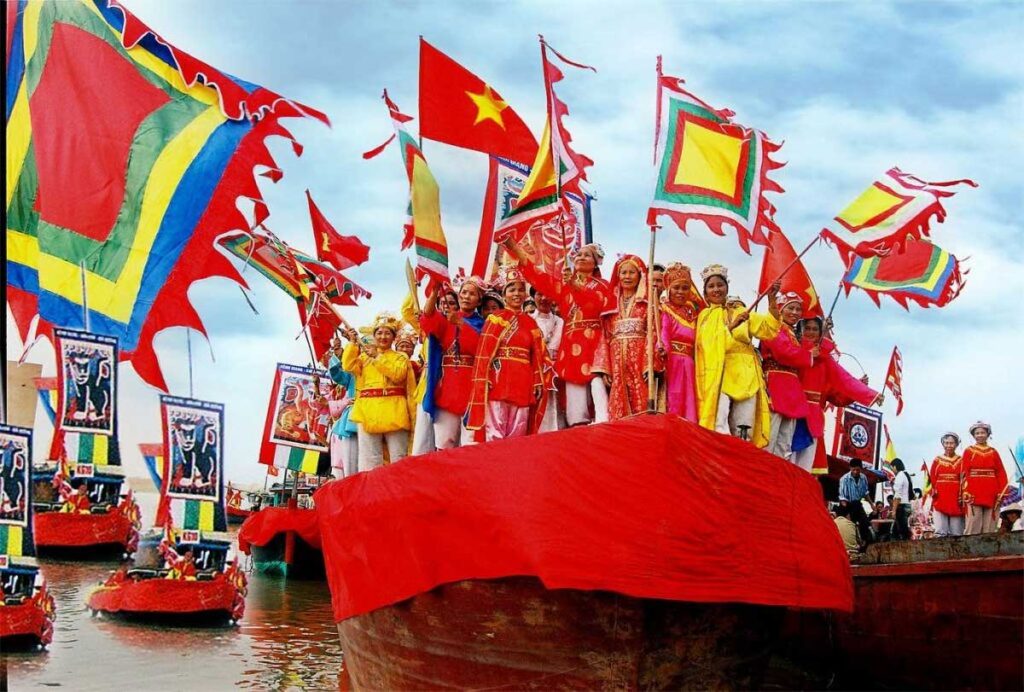
Like many other countries, Vietnam has many folk festivals as a community activity. During the festival, religious rituals, customs, rules, and forms of living of a community are recreated very vividly. The festival is held at different times of the year, depending on the customs and traditions of each ethnic group, but the festival is still most concentrated in the spring.
Vietnam has many large and solemn festivals, such as sacrifices to the gods, festivals to commemorate the merits of ancestors and lineages, such as the Hung Temple festival, and festivals to celebrate heroes, such as the Temple Festival. Mau Doi Festival, Giong Festival, Kiep Bac Temple Festival, and Dong Da Festival. There are festivals to commemorate people who have contributed to expanding the land, the ancestors of professions, and the Vietnamese people. Besides the major festivals of the Vietnamese people, other ethnic groups have significant festivals, such as the Kate festival of the Cham people, the Moon worshiping ceremony of the Khmer people, the Dong Dong festival of the Tay and Nung people, and the Ban flower festival. of the Thai people, the Elephant racing festival of the Mnong people…
These festivals provide a glimpse into the diverse cultural traditions of Vietnam and offer opportunities for locals and visitors alike to connect with the country’s rich heritage. The dates of these festivals can vary each year based on the lunar calendar.
In addition to the large and solemn festivals in Vietnam from north to south, there are thousands of large and small festivals for the Vietnamese ethnic groups. Vietnam’s festivals are diverse: agricultural festivals, entertainment festivals, talent competitions, love-making festivals, historical festivals, etc. Especially the New Year (Lunar New Year) festival in Vietnam. Vietnamese and some other ethnic groups
Along with folk festivals, religious festivals initially only had internal meaning. Still, those festivals spread to other social classes over time and became community festivals such as Buddha’s birthday in Buddhism and Christmas in Catholicism.
According to 2009 statistics, Vietnam currently has 7,966 festivals, including 7,039 folk festivals (accounting for 88.36%), 332 historical festivals (accounting for 4.16%), 544 religious festivals (accounting for 6.28%), ten festivals imported from abroad (accounting for 0.12%), the rest are other festivals (accounting for 0.5%).
Traditional festivals in Vietnam usually occur in the Spring and a few in the Fall, the two most beautiful seasons of the year and when farmers have leisure time. Among Vietnamese festivals, we must mention the festivals that dominate most families in all regions of the country: the Lunar New Year, Vu Lan Festival, and Mid-Autumn Festival. Recently, several festivals have received attention from the state and people, such as the Hung Temple Festival, Doi Son President Festival, Christmas, and Buddha Tich Festival.
Culture and Arts
The art of a nation is the most characteristic element and has the fastest access to the outside world in the context of today’s globalization. Vietnamese art has existed for thousands of years, starting from traditional art, also known as Vietnamese folk art.
Literature
Like other countries’ literature, Vietnamese literature includes two parts: folk literature and written literature. Folk literature is the oral literature of the people and written literature includes Chinese literature, Nom literature, and National language literature.
Vietnam’s folk literature treasure is vibrant and diverse to preserve the precious traditions of the nation preserve the life experiences and production experiences of generations of Vietnamese people when the majority Among the people in feudal times who did not have the conditions to know Chinese, a form of oral folk literature was born and passed down from generation to generation in Vietnam.
Architecture
Vietnam boasts a rich architectural heritage that reflects its long history, cultural diversity, and influences from various periods. Starting as early as folk architecture with house motifs on the surface of Dong Son bronze drums around the 7th century BC, Vietnamese architecture was heavily influenced by Chinese architecture during the Northern period. Since the 10th century, when Vietnam gained independence, Vietnamese architecture has been a combination of indigenous architecture with influences from China. Vietnamese projects are usually not large in scale. Still, they are often a harmonious combination between the main project and the surrounding landscape, especially using lakes, ponds, and rivers to regulate climate and create landscapes… Since the late 19th century, with the French colonial rule, Vietnamese architecture began to apply Western architectural and construction models and methods widely, and many works still exist today in Vietnam. Urban areas, especially in Hanoi, have left a beautiful and unique architectural nuance behind.
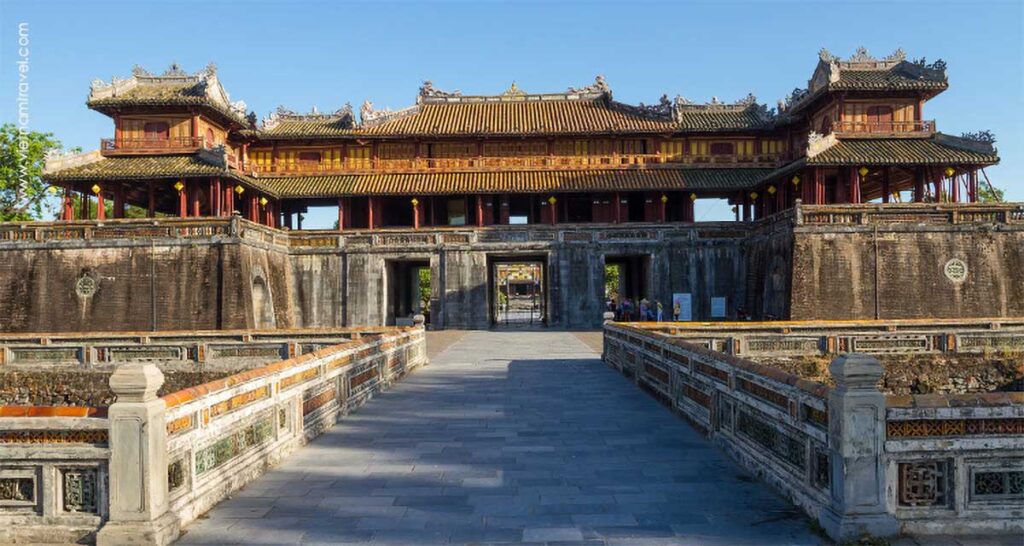
Here are some notable architectural landmarks in Vietnam that you should consider seeing:
- Imperial City of Hue: Located in central Vietnam, the Imperial City of Hue is a vast complex that served as the political and cultural center of the Nguyen Dynasty. The site features impressive gates, palaces, temples, and the Forbidden Purple City. It is a UNESCO World Heritage site.
- Hoi An Ancient Town: Hoi An, a UNESCO World Heritage site, is renowned for its well-preserved ancient architecture. The town features charming yellow-hued buildings, traditional wooden houses, and an iconic Japanese Covered Bridge. The blend of architectural styles reflects Hoi An’s history as a trading port.
- Ha Long Bay Floating Villages: The floating fishing villages of Ha Long Bay showcase unique architectural styles adapted to life on the water. Houses are often built on stilts or floating platforms, creating a distinctive and picturesque landscape.
- One Pillar Pagoda (Chua Mot Cot): Located in Hanoi, the One Pillar Pagoda is a historic Buddhist temple that dates back to the 11th century. The pagoda is known for its unique lotus-shaped design and the legend associated with its construction.
- Thien Mu Pagoda: Situated on the banks of the Perfume River in Hue, Thien Mu Pagoda is one of the oldest and most iconic pagodas in Vietnam. The seven-story pagoda symbolizes the city and offers panoramic views of the surrounding area.
- Cu Chi Tunnels: The Cu Chi Tunnels, near Ho Chi Minh City, showcase an impressive underground network used by the Viet Cong during the Vietnam War. While not traditional architecture, the tunnels are a testament to innovative engineering and military strategy.
- Saigon Notre-Dame Basilica: Located in Ho Chi Minh City, the Saigon Notre-Dame Basilica is a French colonial-era cathedral built entirely with materials imported from France. It is a prominent landmark with distinct red bricks and two bell towers.
- Temple of Literature (Van Mieu – Quoc Tu Giam): Situated in Hanoi, the Temple of Literature is a well-preserved complex that was Vietnam’s first university. The architecture reflects traditional Vietnamese design and is dedicated to Confucius.
- Phong Nha-Ke Bang National Park: While not a single structure, the karst landscapes in Phong Nha-Ke Bang National Park, including the famous Son Doong Cave, showcase stunning natural architecture. The park is a UNESCO World Heritage site.
- Bitexco Financial Tower: Located in Ho Chi Minh City, the Bitexco Financial Tower is a modern skyscraper that stands out in the city skyline. Its unique spiral shape and contemporary design make it a notable architectural landmark.
- Trang An Landscape Complex: Trang An, a UNESCO World Heritage site, features karst landscapes, caves, and temples. The architecture in the area is integrated with the natural surroundings, creating a harmonious and scenic environment.
These architectural landmarks offer diverse styles, from ancient temples and pagodas to French colonial structures and modern skyscrapers. Collectively, they contribute to Vietnam’s cultural identity and provide insights into its history and development.
Arts
Fine arts began with ancient sculptures shown on the Dong Son bronze drums of Lac Viet residents. Through the ages and outside influences, Vietnamese sculpture developed brilliantly in the Ly, Tran, and Le dynasties through religious works and palaces of dynasties. In addition to Vietnamese architectural and sculptural works, Vietnamese architectural sculpture is supplemented with sophisticated techniques in constructing spiritual and religious works of the Cham and Southern Khmer people.
Handicrafts
Vietnamese handicrafts have a rich history and cultural significance, reflecting the country’s artistic traditions and skilled craftsmanship. These handicrafts encompass various products, from traditional items to contemporary designs. Here are some notable Vietnamese handicrafts: Embroidery, Lacquerware, Ceramics and Pottery, Conical Hats (Non-La), Bamboo and Rattan Products, Wood Carvings, Silk Products, Do Paper Products, Handwoven Textiles, Traditional Masks, Doi Moi Products …
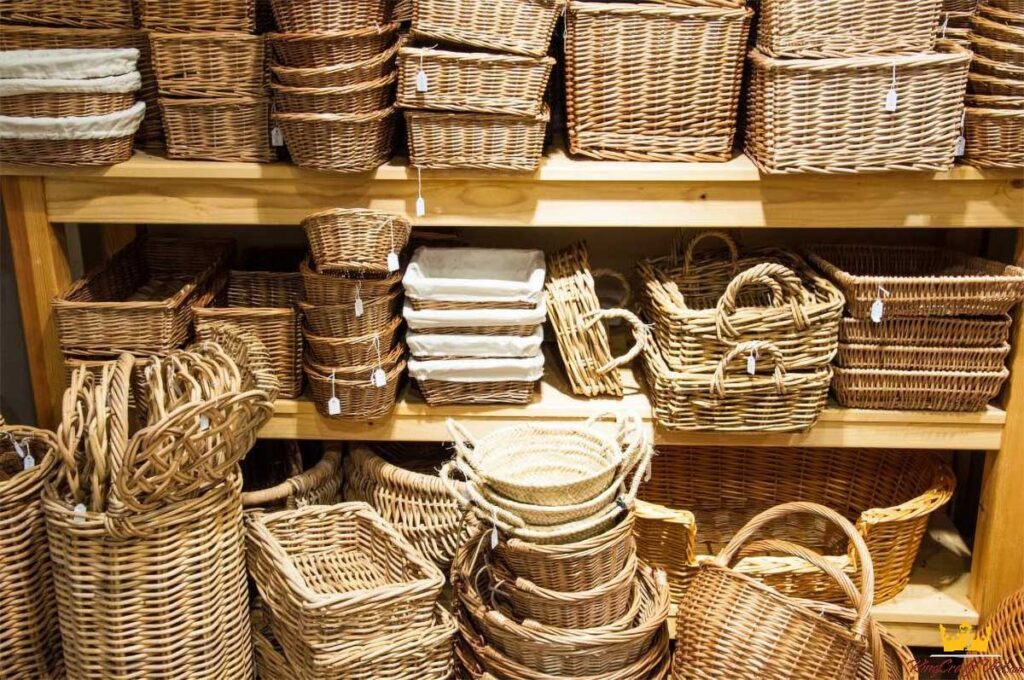
These Vietnamese handicrafts showcase the country’s rich cultural heritage and contribute to the livelihoods of skilled artisans and the preservation of traditional craftsmanship. Many handicrafts are available in local markets, craft villages, and galleries throughout Vietnam.
Opera
The birth and development of Vietnamese folk theater is closely associated with agricultural life. Water puppetry is a folk art of farmers working in rice fields in the Northern Delta (Water puppetry is one of the traditional dance arts of Vietnam), often performed during festivals. In the summer, during leisure time, water puppetry is an art that combines the arts of sculpture, lacquer, music, painting, and literature. Along with water puppetry, the arts of cheo, tuong, and cai luong enrich traditional Vietnamese theater. Since the beginning of the 20th century, along with the influence of Western theater, modern Vietnamese theater art has been supplemented with the arts of drama, comedy, circus, magic, dance, ballet, opera, etc…
Music
Vietnamese traditional music also has a long tradition, starting with adoration, quan ho, ca tru, vi singing, folk songs, vong co, royal court music,… of the Vietnamese people and besides that, there is music folk music of other ethnic groups such as Luong singing of the Tay people, Sli singing of the Nung people, Khan singing of the Ede people, Du Ke singing of the Khmer people… Along with other modern arts, Vietnamese contemporary music from the 1930s was formed and developed until today is called Vietnamese new music with the genres of pre-war music, red music, love songs of 1954-1975, yellow music, overseas music, and youth music. As of December 2013, 6 traditional Vietnamese music forms are quan ho folk songs, ca tru, Hue royal court music, Xoan singing, and Central Highlands Gong Cultural Space (including traditional music). Gong music and amateur music were honored by UNESCO as masterpieces of humanity’s intangible oral cultural heritage (in Vietnam, it is also often called the world’s intangible cultural heritage).